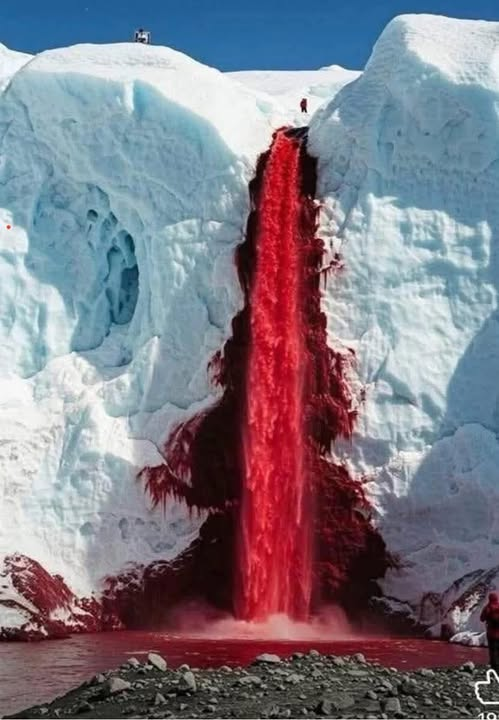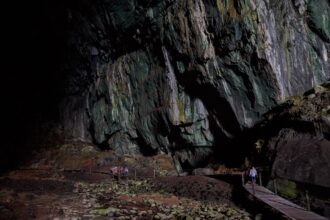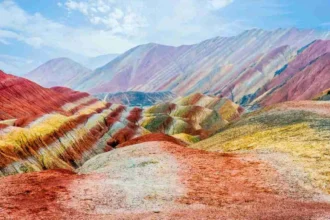In the heart of Antarctica, on Taylor Glacier in the Dry Valleys, one of the world’s most disturbing and fascinating natural spectacles unfolds. Amidst a milky-white glacier, a cascade of dark red liquid appears to spill blood. Blood Falls is so dramatic that early explorers thought they were witnessing a cosmic murder committed by nature itself.

This bloody waterfall has been an absolute mystery for over a century. When Australian geologist Griffith Taylor discovered it in 1911, he thought the red color came from red algae in the ice. For decades, scientists have tried to explain why a polar glacier sheds blood, but the truth has proven far more spectacular than any theory.
Beneath Taylor Glacier lies one of the most extreme ecosystems on Earth. Nearly 400 meters beneath the ice lies a subterranean lake cut off from the outside world for 1.5 million years. This ancient water contains an incredible concentration of iron—20 times more than the normal ocean. If this iron-rich water manages to penetrate the cracks in the ice and reach the surface, the iron immediately oxidizes upon contact with air and turns into blood-colored liquid rust.
But the most astonishing discovery is that this frozen underground lake harbors microorganisms that have evolved in a completely unique way. These bacteria survive without sunlight, oxygen, and lower temperatures, feeding exclusively on iron and sulfur. They are literally the planet’s microbial vampires, transforming metal into life energy and producing this “blood” cascade as a side effect of their alien metabolism.
Blood Falls is a window into a type of life that could exist on other icy planets like Europa or Enceladus. It’s proof that life can survive in the most impossible conditions, and that our planet harbors surprisingly alien ecosystems, even in places that seem completely sterile. When you see this red waterfall erupting from the white ice, you are not just seeing a geological phenomenon, but the lifeblood of an underground world that has evolved in silence and darkness over millions of years.







